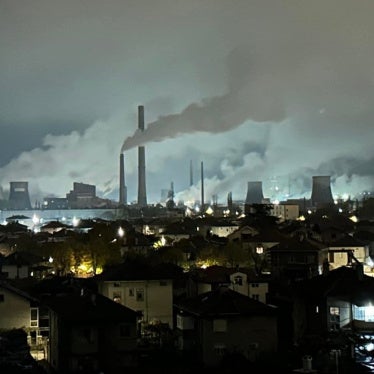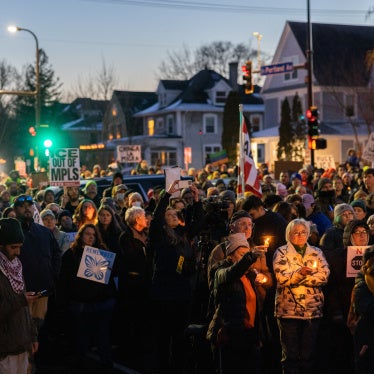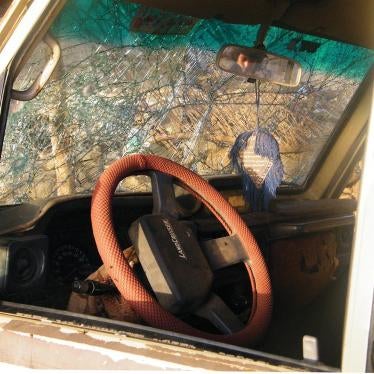“Khorsheed” lives on a treeless street in Chorsada 2, a resettlement community in central Tajikistan that the government created for people displaced by its Rogun Dam and Hydropower Project (HPP).
The Tajik government says it desperately needs Rogun, which will be one of the world’s tallest dams, to meet its electricity needs. But its reservoir will displace over 42,000 people from small mountain villages upstream from the dam site. Khorsheed, whose name has been changed, and many others I interviewed about the project said their situation is dire.
Tajikistan is counting on Rogun to solve its annual winter energy crisis. The proposed project will have an installed capacity of 3,600 Megawatts, 30 percent more than the capacity of Tajikistan’s next largest dam and major energy supplier, Nurek HPP. The World Bank has not committed to funding the project, but it has commissioned two feasibility studies on Rogun, the final drafts of which were published on June 18. Tajikistan, meanwhile, has committed to complying with the Bank policy on involuntary resettlement.
But both the Bank and the Tajik government should take a close look at the impact of Tajikistan’s resettlement program on the lives of the people being moved out of its way.
Rogun is emblematic of the large-scale hydropower projects that the Bank has recently re-embraced. The Bank has acknowledged that the need to resettle so many people to make way for Rogun will be one of the most negative impacts of building the dam. In the 1980s and 1990s, serious human rights abuses arising from World Bank-funded dams caused the institution to move away from large hydropower projects. For example, during construction of the Yacyretá Dam in Argentina, residents suffered serious health consequences after the authorities prematurely raised the reservoir levels, causing sewer systems to flood into populated areas.
But last year, the World Bank’s vice president for climate change, Rachel Kyte, called that move away from large hydro “the wrong message. … That was then. This is now. We are back.”
The Drawbacks of Relocation
When I visited her in November, Khorsheed, pregnant with her sixth child, lived in a modest home in a row of partially completed houses in a barren neighborhood surrounded by cotton fields. She explained that although she and her family had spent five years building their new home, it was not yet finished. Most of the other homes were still unoccupied.
Khorsheed, like many of the residents we interviewed last year and earlier this year, lost farmland and pastures when they were forced to relocate. They had to sell livestock they had relied on for food and supplemental income and had to buy food they used to grow themselves.
“We used to have five or six cows with calves, 30 sheep and goats, lots of chickens,” Khorsheed said. “We had everything: open land, green trees and grass, lots of space.”
In Khorsheed’s old village in Nurobad district, which I also visited, farms and orchards cover the lush hillsides. Mountain springs provide water to families, for drinking and household tasks as well as for irrigation and livestock.
At the relocation site in Dangara, the plots are small and the land is less fertile. “Now we have only one cow,” Khorsheed said. “We live very close to each other. There is no pasture for the animals to graze.”
Since 2009 the government has resettled over 1,500 of the roughly 7,000 families slated for relocation. My colleagues and I interviewed 156 people in resettlement sites and villages planned for resettlement. We also spoke with government representatives at the community, district, and national levels.
The government had given the people to be resettled compensation for their homes and the use of an assigned plot in a resettlement village, and left them to build their new homes. But the low payments and rising costs of supplies made it difficult for them to get what they needed, let alone to hire qualified laborers.
Having to build their own houses creates further economic burdens for resettled people. Many men in Tajikistan go abroad to work because of high unemployment rates. Another resettled resident, “Daler,” who has been trying to complete his house since 2010, told us, “It’s a question—to go to Russia or not? I need the money, but who will build my house if I go?”
At some resettlement sites, taps supplied water only a few hours per day. People struggled to get enough water for cooking and basic needs. Many had given up trying to cultivate even small plots of land for food due to lack of water.
When we visited resettlement sites in two districts in November, the government had not yet completed local schools. Parents reported that it took their children up to two hours to walk to school, and that they often kept their children home in bad weather.
Tajikistan uses forced and child labor in some of its cotton fields during the autumn harvest across the country, and that was one more unpleasant surprise for relocated children who began attending an existing school in Dangara. Children who refused to work were slapped or hit with switches and humiliated at the morning roll call. When parents protested, school officials refused to stop the practice. Instead, they began paying the children a token sum, a fraction of the already low wages adult laborers receive for harvesting cotton.
Residents said Tajikistan has made some improvements to its resettlement practices, but not enough to solve the struggling families’ problems with their new locations. The government needs to re-evaluate its process for calculating compensation to reflect the replacement cost of homes. It should make farmland readily available and promptly provide services such as water, electricity, and education. The authorities should also closely monitor conditions for resettled residents, paying particular attention to marginalized groups, including female-headed households and people with disabilities.
What the Bank Should Do
Tajikistan has affirmed its intention to continue building the dam with or without donor support, and to move ahead with resettlements.
Whether or not the World Bank decides to support the government further with Rogun, it should closely monitor the Rogun resettlements and work with the government to address violations of the Bank’s involuntary resettlement policy, to which Tajikistan has pledged compliance. It should also, through its ongoing safeguard policies review, determine how to fill the gaps between its policies and international human rights standards to protect the fundamental rights of people affected by the Bank’s development projects worldwide.
Although the Bank-commissioned draft environmental and social impact assessment for Rogun considers international environmental and water law, it does not consider relevant international human rights instruments that should guide resettlement. The Bank’s involuntary resettlement policy provides some important protections, but it is insufficient to provide effective protection for all human rights.
Khorsheed told me that her family has to buy most of its food these days. Losing their land for grazing and growing food and having to pour all their money into building a house is taking a huge toll. “Now my children beg me to give them fruit,” she said. “I have to try to distract [them] with sweetened tea.”
Francesca Corbacho is a business and human rights fellow at Human Rights Watch and the author of a new report about resettlements for the Rogun Dam. She is a contributor to Foreign Policy In Focus.






